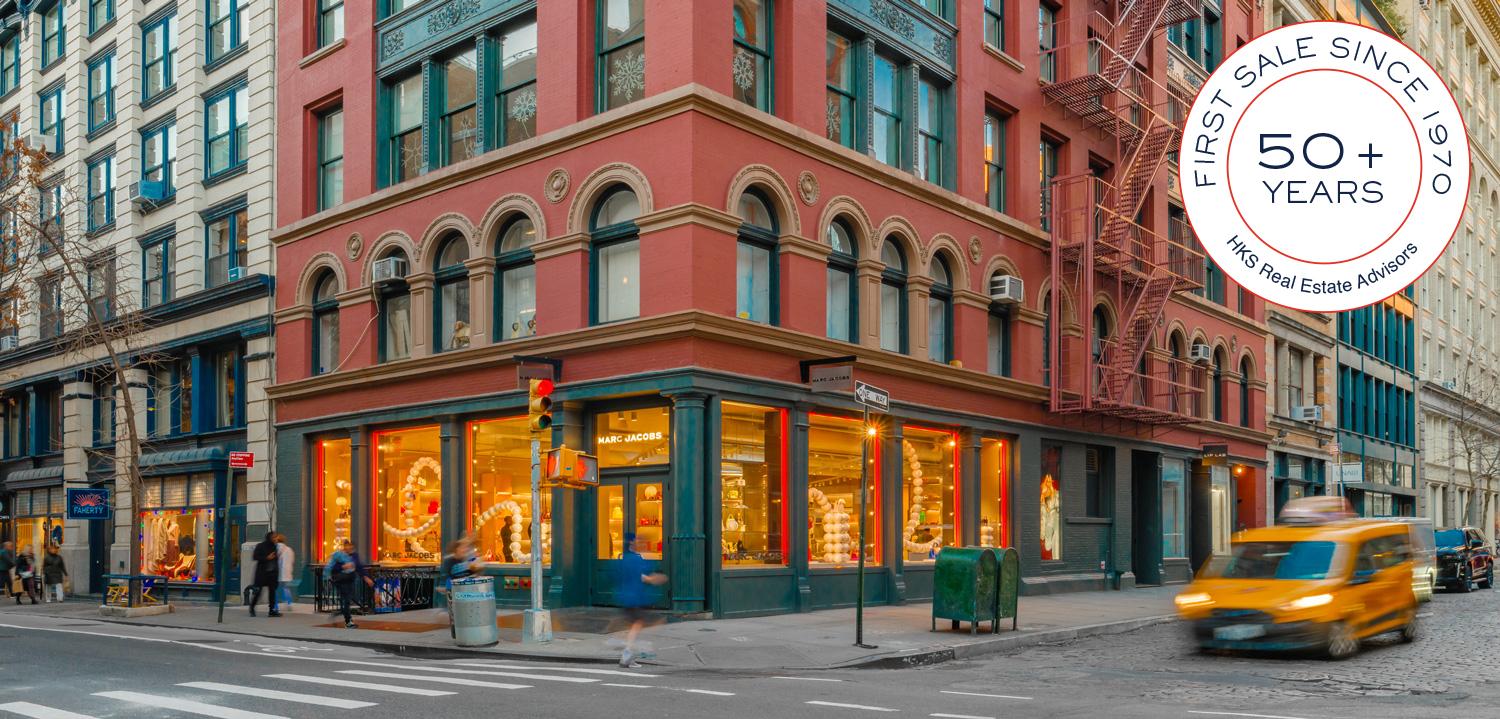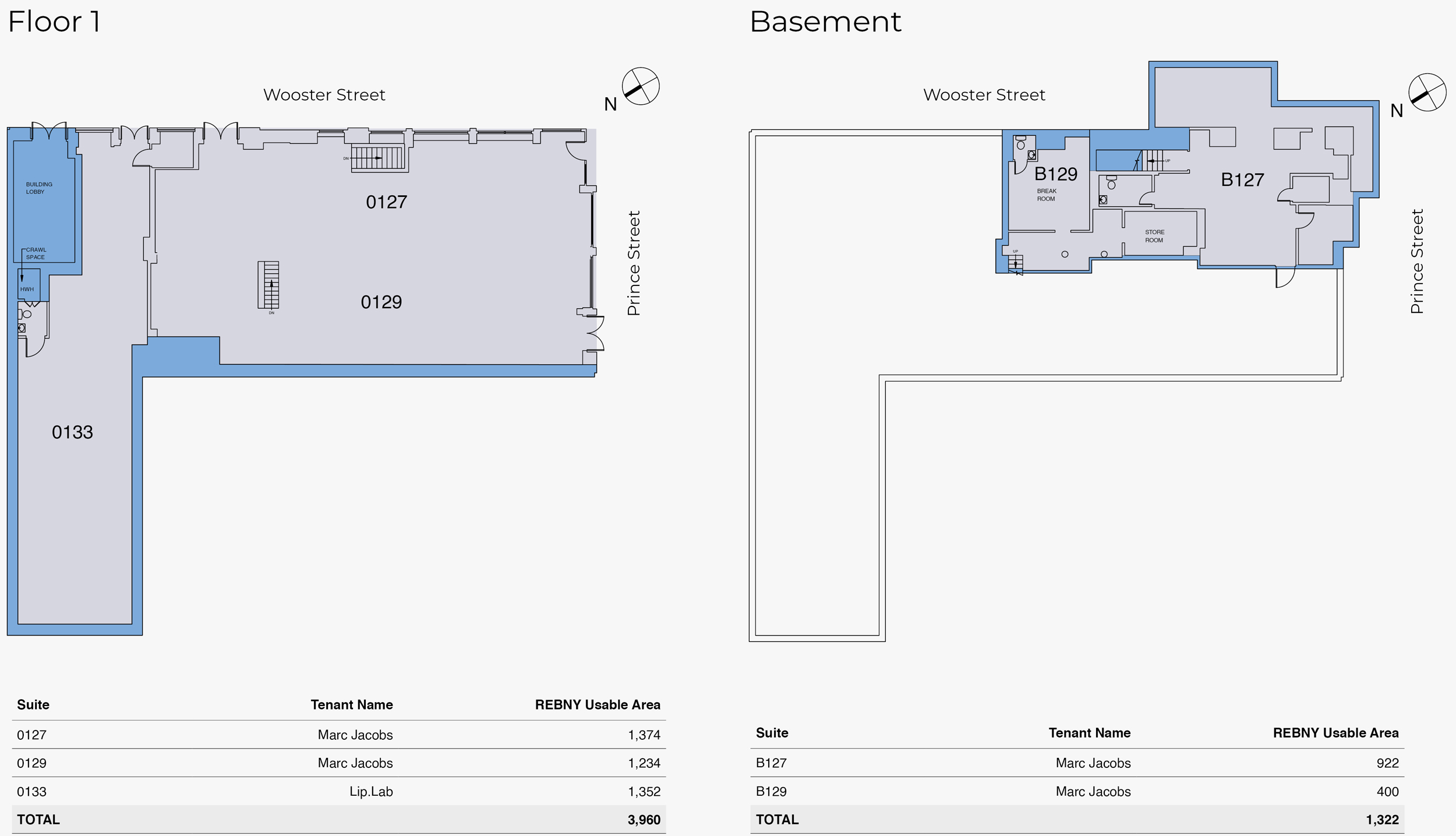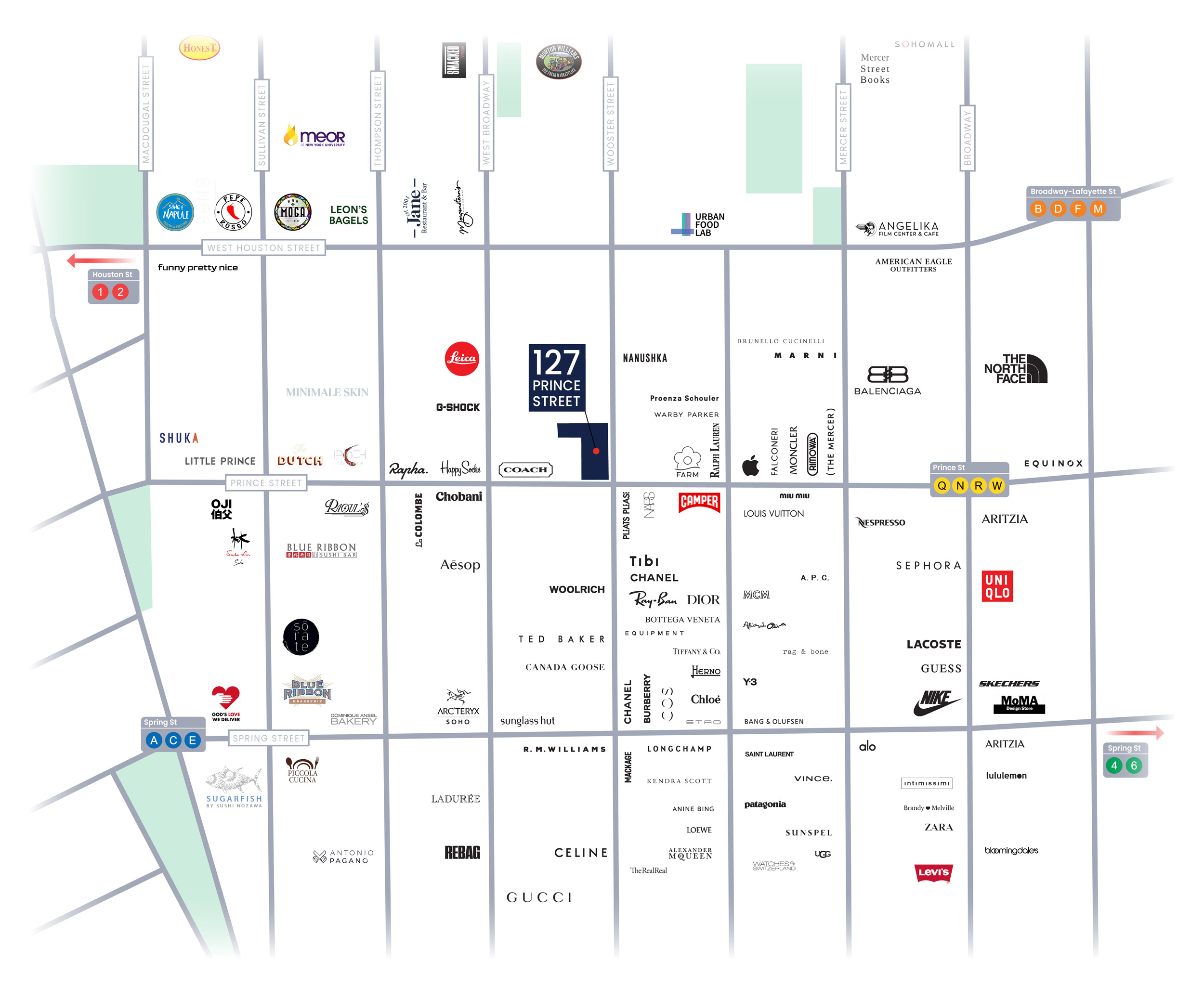127 Prince Street
Multi-Tenant Ground Level Retail Co-Op in SoHo
±3,960 SF
On Grade Floor Area
±1,322 SF
Lower Level Floor Area
134 ft
Lot Frontage
$1,320,000
Annual Rent
Once in a lifetime opportunity to acquire super-prime Soho corner retail property being sold for the first time in 50+ years. With 134ft of frontage along Prince and Wooster Streets, the property is currently leased to Marc Jacobs and Lip Lab, two marquee, credit tenants. The asset features 3,960 SF above ground and an additional 1,322 SF of cellar space.
Both tenants are owned by LVMH (Louis Vuitton Moët Hennessy), the world’s largest luxury conglomerate.
Both leases were recently executed, including substantial tenant buildout investments (over $2.8 million for 127-129 Prince), with lease terms that run until 2028 and 2030, respectively.
Please download the confidentiality agreement
and send it signed to alulli@hks.com
to receive the full Offering Memorandum.
Interior Photos
Neighborhood Map
Michelin Starred Restaurants
- Vestry
- Hirohisa
- Torrisi
- Estela
- The Musket Room
- Torien
- Yoshino
Hotels
- Crosby Street Hotel
- The Mercer
- Sixty Soho
- Soho Grand Hotel
- The Broome Hotel
- ModernHaus Soho
- Arlo Soho
Other Popular Venues
- Museum of Chinese in America
- Jeffrey Deitch Galleries
- Leslie-Lohman Museum of Art
- Elizabeth Street Garden
- Museum of Ice Cream
- The New York City Fire Museum
- SoHo Playhouse
- Ear Inn
- Hauser & Wirth
Nearby Luxury Stores
- Gucci
- Prada
- Chanel
- Ted Baker
- Balenciaga
- Louis Vuitton
- Dior
- Burberry
- Valentino
- Miu Miu
- MaxMara
- Sandro
SOHO NYC
Location Overview
The corner of Prince and Wooster Streets in SoHo stands as the quintessential example of the neighborhood’s vibrant retail and real estate landscape. This intersection is renowned for its high-end boutiques and designer stores, attracting a fashionable and discerning clientele.
Neighborhood Overview
SoHo, located in the heart of Manhattan, is a vibrant neighborhood known as a shopper’s paradise, boasting a diverse array of stores ranging from high-end designer boutiques to quirky, independent shops. This retail richness attracts a steady stream of affluent visitors, making it one of New York City’s premier shopping destinations. The streets of SoHo, characterized by their cobblestones and historic cast-iron buildings, create a unique architectural backdrop for this retail haven. The neighborhood also hosts numerous art galleries, trendy restaurants, and cafes, adding to its lively atmosphere.
SoHo’s transit connectivity is a cornerstone of its appeal, offering convenient access to the rest of New York City. The ![]()
![]()
![]()
![]() and
and ![]() subway lines run through or near the neighborhood, providing direct routes to areas like Times Square, Wall Street, and Central Park. Apart from the subways, SoHo is also well-served by several bus routes. Additionally, bike-sharing stations and pedestrian-friendly streets cater to eco-conscious commuters. Its proximity to major transit hubs including Penn Station and Grand Central Terminal, both within a 15-minute subway ride, make it the ideal location for both residents and visitors.
subway lines run through or near the neighborhood, providing direct routes to areas like Times Square, Wall Street, and Central Park. Apart from the subways, SoHo is also well-served by several bus routes. Additionally, bike-sharing stations and pedestrian-friendly streets cater to eco-conscious commuters. Its proximity to major transit hubs including Penn Station and Grand Central Terminal, both within a 15-minute subway ride, make it the ideal location for both residents and visitors.
While Fifth and Madison Avenues are celebrated for their luxury brands and flagship stores, SoHo presents a more diverse and eclectic shopping experience. It has become the epicenter for trendsetting boutiques, avant-garde designers, and unique concept stores that cater to a more varied demographic. SoHo’s market is distinctly characterized by smaller, more versatile retail spaces, commonly seen in historic cast-iron buildings and typically offering more accessible options for emerging brands and startups.
Neighborhood History
SoHo, an acronym for “South of Houston Street,” emerged as a distinct neighborhood in the early 19th century and was initially called the South Village. For many years, it served as an industrial area filled with warehouses and factories.
By the mid-20th century, as manufacturing declined, the dilapidated but spacious lofts and buildings attracted artists, celebrities, and LGBTQ pioneers, who fought Robert Moses’s plan to build a freeway through the area and to preserve it as the SoHo–Cast Iron Historic District.
This cultural transformation turned SoHo into the hub for New York City’s art community and played a pivotal role in its evolution into the fashionable, retail-rich, and highly sought-after area it is known as today.
Contact Us
INVESTMENT SALES
Peter Carillo
Principal, Senior Managing Director
212-254-1600 x118
pcarillo@hks.com
Antonio Lulli
Associate Director
212-254-1600 x112
alulli@hks.com
EQUITY & FINANCING
JOHN HARRINGTON
Principal and Founding Partner
212-254-1600 x104
jharrington@hks.com

Information contained herein is from sources deemed reliable but is subject to errors, omissions, change of price or terms, and withdrawal without prior notice at any time.
















